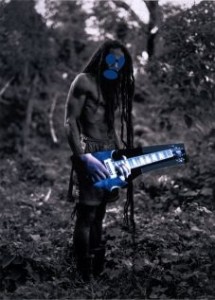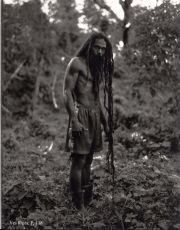 So, do you know what an “appropriation artist” is? It’s an artist who uses preexisting objects or images to create new works of art. While you might guess that appropriation artists keep many a copyright lawyer employed they also sell their works for large sums of money. Take for example, Richard Prince, perhaps, the most famous appropriation artist. In a recent exhibit of Rastafarian images referred to as the “Canal Zone” exhibit, he sold one work for more than two million dollars! Prince didn’t create the base images for his works, rather he appropriated them from a collection of photos by Patrick Cariou, which Prince altered by “printing ‘lozenges’ over their subjects’ facial features and using only portions of some of the images.”
So, do you know what an “appropriation artist” is? It’s an artist who uses preexisting objects or images to create new works of art. While you might guess that appropriation artists keep many a copyright lawyer employed they also sell their works for large sums of money. Take for example, Richard Prince, perhaps, the most famous appropriation artist. In a recent exhibit of Rastafarian images referred to as the “Canal Zone” exhibit, he sold one work for more than two million dollars! Prince didn’t create the base images for his works, rather he appropriated them from a collection of photos by Patrick Cariou, which Prince altered by “printing ‘lozenges’ over their subjects’ facial features and using only portions of some of the images.”
Patrick Cariou, who made approximately $8,000 from his book of Rastafarian photographs, believed that Prince ripped him off and sued him in federal court for copyright infringement. Prince defended himself by asserting the legal doctrine of “fair use,” which, under the U.S. Copyright Act, permits use of copyrighted works for purposes of “criticism, comment, news reporting, teaching, scholarship, or research.” The lower court rendered its judgement in favor of Cariou holding that to qualify for fair use, the secondary use must “comment on, relate to the historical context of, or critically refer back to the original works.” Because Prince’s works did not comment upon the original works of Cariou, the court held that Prince’s works did not qualify as fair use. Prince, who was not short of funds, appealed.
In a complete reversal, the U.S. Court of Appeals for the Second Circuit rejected the reasoning of the District Court judge, and concluded that there is no legal requirement that the secondary use must comment upon the original work to qualify as fair use even if the use “serves some purpose other than those” cited by the statute. The Court wrote that the requirement of fair use only requires that the new work be “transformative” and that it “alter the original with ‘new expression, meaning, or message.'” The Court of Appeals held that Cariou’s work is “serene” and “beautiful” while Prince’s work, whch is “crude,” “jarring,” “hectic,” and “provocative,” is fundamentally different.
Here’s an example from the court’s opinion, what do you think?
— Adam G. Garson, Esq.



